How to Set up an FTP Server in Ubuntu Linux
Part 1 of 4:
Installing the FTP Framework
-
 Make sure that Ubuntu is up-to-date. Ubuntu versions 17.10 and up have vastly different file paths than previous versions, so you'll need to upgrade to the latest version of Ubuntu if you haven't already done so:[1]
Make sure that Ubuntu is up-to-date. Ubuntu versions 17.10 and up have vastly different file paths than previous versions, so you'll need to upgrade to the latest version of Ubuntu if you haven't already done so:[1]- Open Terminal
- Type in sudo apt-get upgrade and press ↵ Enter.
- Type in your password and press ↵ Enter.
- Type in y when prompted, then press ↵ Enter.
- Wait for the upgrades to finish installing, then restart your computer if prompted.
-
 Open Terminal. Click the Applications menu ⋮⋮⋮, scroll down, and click the black-and-white Terminal icon to do so.
Open Terminal. Click the Applications menu ⋮⋮⋮, scroll down, and click the black-and-white Terminal icon to do so.- You can also just press Alt+Ctrl+T to open Terminal.
-
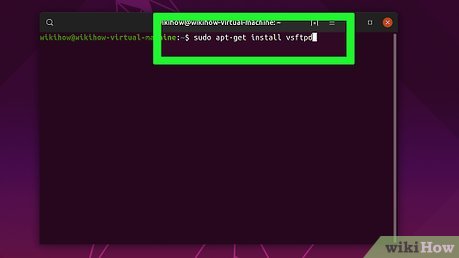 Enter the VSFTPD install command. Type sudo apt-get install vsftpd into Terminal, then press ↵ Enter.
Enter the VSFTPD install command. Type sudo apt-get install vsftpd into Terminal, then press ↵ Enter. -
 Enter your password. Type in the password that you use to log into your computer, then press ↵ Enter.
Enter your password. Type in the password that you use to log into your computer, then press ↵ Enter. -
 Wait for VSFTPD to install. This will take anywhere from 5 minutes to 20 minutes depending on your current FTP settings and your Internet connection, so be patient.
Wait for VSFTPD to install. This will take anywhere from 5 minutes to 20 minutes depending on your current FTP settings and your Internet connection, so be patient. -
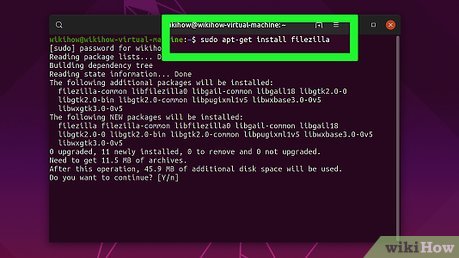 Install FileZilla. This is the program that you'll use to access and upload to your server. To install it:
Install FileZilla. This is the program that you'll use to access and upload to your server. To install it:- Type in sudo apt-get install filezilla
- Enter your password again if prompted.
- Wait for the installation to complete.
Part 2 of 4:
Configuring the FTP Server
-
 Open the VSFTPD configuration file. Type in sudo nano /etc/vsftpd.conf and press ↵ Enter. You'll be editing this file to allow (or disable) certain VSFTPD features.
Open the VSFTPD configuration file. Type in sudo nano /etc/vsftpd.conf and press ↵ Enter. You'll be editing this file to allow (or disable) certain VSFTPD features. -
 Allow local users to log into your FTP server. Use the arrow keys to scroll down to the
Allow local users to log into your FTP server. Use the arrow keys to scroll down to the# Uncomment this to allow local users to log in.heading, then remove the "#" from thelocal_enable=YESline below it.[2]- You can remove the "#" by using the arrow keys to select the letter in front of it (in this case, "l") and pressing the ← Backspace key.
- Skip this step if the
local_enable=YESline is already white.
-
 Allow FTP write commands. Scroll down to the
Allow FTP write commands. Scroll down to the# Uncomment this to enable any form of FTP write command.heading, then remove the "#" from thewrite_enable=YESline below it.- Skip this step if
write_enable=YESis already white.
- Skip this step if
-
 Disable ASCII mangling. Scroll all the way down to the
Disable ASCII mangling. Scroll all the way down to the# ASCII mangling is a horrible feature of the protocol.heading, then remove the "#" from the following two lines:ascii_upload_enable=YESascii_download_enable=YES
-
 Change the "chroot" settings. Scroll down to the
Change the "chroot" settings. Scroll down to the# chroot)heading, then add the following lines:user_sub_token=$USERchroot_local_user=YESchroot_list_enable=YES- If any of these lines already exist, simply remove the "#" before each existing line.
-
 Change the default "chroot" settings. Scroll down to the
Change the default "chroot" settings. Scroll down to the(default follows)heading, then add the following lines:chroot_list_file=/etc/vsftpd.chroot_listlocal_root=/home/$USER/Public_htmlallow_writeable_chroot=YES- If any of these lines already exist, simply remove the "#" before each existing line.
-
 Enable the "ls recurse" option. Scroll down to the
Enable the "ls recurse" option. Scroll down to the# You may activate the "-R" option...heading, then remove the "#" from thels_recurse_enable=YESline below it. -
 Save and exit the text editor. To do so:
Save and exit the text editor. To do so:- Press Ctrl+X
- Type y
- Press ↵ Enter
Part 3 of 4:
Adding Usernames to the CHROOT List
-
 Open the "chroot" text file. Type in sudo nano /etc/vsftpd.chroot_list and press ↵ Enter.
Open the "chroot" text file. Type in sudo nano /etc/vsftpd.chroot_list and press ↵ Enter.- You can skip to the last step in this part if you don't want to specify people who can access your FTP server.
-
 Enter your password. Type in the password that you use to log into Ubuntu and press ↵ Enter. This will open the "chroot" text file.
Enter your password. Type in the password that you use to log into Ubuntu and press ↵ Enter. This will open the "chroot" text file.- Skip this step if not asked for your password.
-
 Add usernames to the list. Type in your own username, press ↵ Enter, and repeat with any other usernames of people whom you want to have access their Home directories from within your server.
Add usernames to the list. Type in your own username, press ↵ Enter, and repeat with any other usernames of people whom you want to have access their Home directories from within your server. -
 Save your list. Press Ctrl+X, type in y, and press ↵ Enter. Your list will be saved.
Save your list. Press Ctrl+X, type in y, and press ↵ Enter. Your list will be saved. -
 Restart VSFTPD. Type in sudo systemctl restart vsftpd and press ↵ Enter. This will stop and restart VSFTPD, ensuring that your changes have been saved. You can now access your FTP server.[3]
Restart VSFTPD. Type in sudo systemctl restart vsftpd and press ↵ Enter. This will stop and restart VSFTPD, ensuring that your changes have been saved. You can now access your FTP server.[3]
Part 4 of 4:
Accessing Your Server
-
 Determine your server's address. If you're paying for an FTP server through a hosting service (e.g., Bluehost), you'll need to know the service's IP address or regular address in order to connect to it.[4]
Determine your server's address. If you're paying for an FTP server through a hosting service (e.g., Bluehost), you'll need to know the service's IP address or regular address in order to connect to it.[4]- If you're hosting your own server from your computer, you'll use your computer's IP address, which you can figure out by entering ifconfig in Terminal and then reviewing the "inet addr" number.
- If "ifconfig" isn't installed, you can install it by entering sudo apt-get install net-tools in Terminal.
- If you're hosting your own server from your computer, you'll use your computer's IP address, which you can figure out by entering ifconfig in Terminal and then reviewing the "inet addr" number.
-
 Forward a port on your router. Once you know your server's IP address, you'll need to forward your router's port 21 slot to that address; make sure that the port uses TCP (not UDP or a mixture of the two).
Forward a port on your router. Once you know your server's IP address, you'll need to forward your router's port 21 slot to that address; make sure that the port uses TCP (not UDP or a mixture of the two).- Port forwarding varies from router to router, so be sure to check the linked article or your router's documentation for instructions.
-
 Open Filezilla. Type filezilla into Terminal and press ↵ Enter. After a moment, FileZilla will open.
Open Filezilla. Type filezilla into Terminal and press ↵ Enter. After a moment, FileZilla will open.- If you want to connect via Terminal, you can try typing in ftp [address]. As long as your server is running and you have Internet access, this will attempt to connect to your FTP server; however, you may not be able to transfer files.
-
 Click File. It's in the top-left corner of the FileZilla window. Doing so prompts a drop-down menu.
Click File. It's in the top-left corner of the FileZilla window. Doing so prompts a drop-down menu. -
 Click Site Manager…. You'll find this option in the drop-down menu. The Site Manager window will open.
Click Site Manager…. You'll find this option in the drop-down menu. The Site Manager window will open. -
 Click New Site. It's a white button in the lower-left side of the window. Doing so opens the New Site section of the Site Manager.
Click New Site. It's a white button in the lower-left side of the window. Doing so opens the New Site section of the Site Manager. -
 Enter your server's address. In the "Host:" text field, type in the address (or IP address) of the FTP server to which you want to connect.[5]
Enter your server's address. In the "Host:" text field, type in the address (or IP address) of the FTP server to which you want to connect.[5] -
 Add the forwarded port number. Type 21 into the "Port:" text field.
Add the forwarded port number. Type 21 into the "Port:" text field. -
 Click Connect. It's a red button at the bottom of the page. Doing so will prompt FileZilla to connect your computer to your FTP server.
Click Connect. It's a red button at the bottom of the page. Doing so will prompt FileZilla to connect your computer to your FTP server. -
 Move files onto the server. You can click and drag folders from the left-hand window into the right-hand window to upload them to your FTP server page.
Move files onto the server. You can click and drag folders from the left-hand window into the right-hand window to upload them to your FTP server page.
4.3 ★ | 3 Vote
You should read it
May be interested
- Is CentOS or Ubuntu the best web hosting server operating system?
 with so many available linux distributions, choosing a suitable distro for your home computer is not easy. choosing a linux distribution for the server is even more difficult.
with so many available linux distributions, choosing a suitable distro for your home computer is not easy. choosing a linux distribution for the server is even more difficult. - Ubuntu Server Upgrade Steps
 ubuntu also constantly updates itself with newer versions. if you're using the desktop, you'll be prompted when an update is available and receive instructions on the process. however, on the server, you may not have this privilege. so updating ubuntu server will involve running a few command lines.
ubuntu also constantly updates itself with newer versions. if you're using the desktop, you'll be prompted when an update is available and receive instructions on the process. however, on the server, you may not have this privilege. so updating ubuntu server will involve running a few command lines. - 8 ways Ubuntu changes and improves Linux
 ubuntu is the most prominent linux distribution in the world. ubuntu and its developer, canonical, have been plagued by a lot of fuss over the years, but the linux world is getting much better thanks to both.
ubuntu is the most prominent linux distribution in the world. ubuntu and its developer, canonical, have been plagued by a lot of fuss over the years, but the linux world is getting much better thanks to both. - Tips and tricks after installing Ubuntu
 ubuntu is one of the completely free open source operating systems. this is a distribution (distro) of linux with the second highest amount of traffic after linux mint.
ubuntu is one of the completely free open source operating systems. this is a distribution (distro) of linux with the second highest amount of traffic after linux mint. - Is Arch Linux better than Ubuntu?
 arch linux and ubuntu are two big names in the linux world. both have a huge fan base, with two completely opposite positions.
arch linux and ubuntu are two big names in the linux world. both have a huge fan base, with two completely opposite positions. - Distinguish Ubuntu and Linux Mint
 linux is an open-source operating system and anyone can edit and customize to their liking, ubuntu and mint are the two operating systems born from that.
linux is an open-source operating system and anyone can edit and customize to their liking, ubuntu and mint are the two operating systems born from that. - How to set up your own Git server on Linux
 while you can count on globally renowned git hosting services like github, in some cases it is better to host a personal git server for enhanced privacy, customizability, and security.
while you can count on globally renowned git hosting services like github, in some cases it is better to host a personal git server for enhanced privacy, customizability, and security. - Following many other Linux employees, Ubuntu stopped providing 32-bit ISO Images
 ubuntu declares that it will stop providing the iso installer for os that the new version starting with ubuntu 17.0 (artful aardvark) will be released on october 19.
ubuntu declares that it will stop providing the iso installer for os that the new version starting with ubuntu 17.0 (artful aardvark) will be released on october 19. - How to install fcgiwrap for Nginx on Ubuntu 20.04
 fcgiwrap is a simple server used to run cgi applications via fastcgi. we can use it to provide clean cgi support for nginx webserver. here's how to install fcgiwrap on ubuntu 20.04.
fcgiwrap is a simple server used to run cgi applications via fastcgi. we can use it to provide clean cgi support for nginx webserver. here's how to install fcgiwrap on ubuntu 20.04. - 7 best antivirus programs for Ubuntu
 viruses can still be spread, especially if you have a samba server (to share windows files on linux) or external devices often interact with both linux and windows.
viruses can still be spread, especially if you have a samba server (to share windows files on linux) or external devices often interact with both linux and windows.







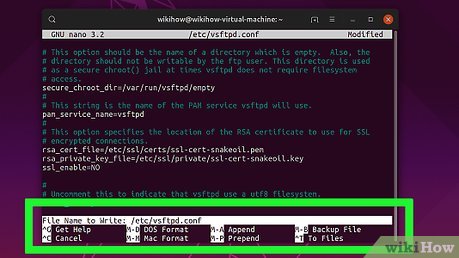









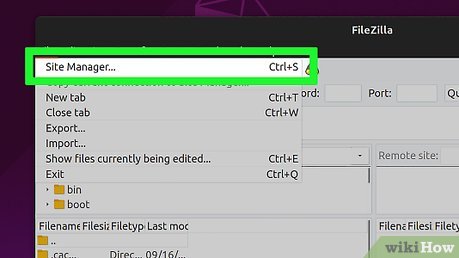


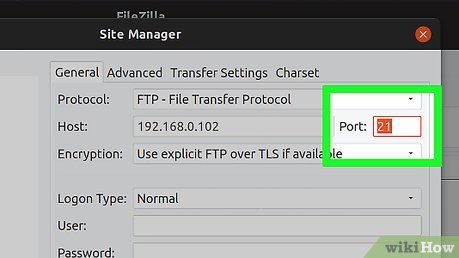












 How to Format a USB Flash Drive in Ubuntu
How to Format a USB Flash Drive in Ubuntu How to Install Ubuntu Linux
How to Install Ubuntu Linux How to Format a Hard Drive Using Ubuntu
How to Format a Hard Drive Using Ubuntu How to Become Root in Ubuntu
How to Become Root in Ubuntu How to Uninstall Ubuntu Software
How to Uninstall Ubuntu Software How to Install FreeNX Server on Ubuntu 9.04 Jaunty
How to Install FreeNX Server on Ubuntu 9.04 Jaunty